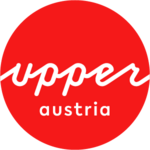R1.08 Danube-Granite Loop
4040 Linz

"Of Danube waves, granite, and hops"
Recommended season:
- March
- April
- May
- June
- July
- August
- September
- October
- Loop
- Scenic
- Refreshment stops available
- Geological highlights
- Botanical highlights
A mountainous bike loop from the Upper Danube Valley up to Kirchberg ob der Donau to the 360° panoramic observation tower "Danube on the Mountain" (613 m). Then follows leisure cycling over the hilly Mühlviertel granite highland: majestic vistas, rural cultural landscapes, hidden granite quarries... Cultural highlights: Neuhauser Granite (art), beer.
Highlights:
- Observation tower "Danube on the Mountain" (360° panoramic view, castle site)
- Granite Experience World (discover the fascination of granite)
- Neuhaus Castle / St. Martin
The Upper Danube Valley – One of the longest breakthrough valleys of the Danube with over 90 km (!). The starting point for this attractive granite highland loop is in a very quiet section of this deep narrow valley – in the port town of Untermühl. Today inconspicuous, it was once significant: a supply point for Danube shipping, loading port for the famous Neuhauser Granite...! After crossing the Große Mühl river mouth, the 300-meter altitude ascent begins onto the plateau of the Mühlviertel granite highland. In the natural mixed forest on the steep valley slope, it climbs in switchbacks on a quiet district road. The rural cultural landscape makes the steepness more gentle. In the neat hill village Kirchberg ob der Donau, you have made it. Congratulations! The surprising highlight: the magnificent 360° panoramic view from the observation tower "Danube on the Mountain" (613 m) – over the Mühlviertel, the Danube valley, the Sauwald, ... up to the Alps! By the way, here you are standing on the highest elevation rising directly from the Danube stream.
Now leisure cycling begins in the rhythm of the hilly Mühlviertel granite highland: meadows, fields, orchards, small farming hamlets, groves... pure rural idyll! On the way to Altenfelden, the plateau appears visually limited and secluded. You cycle over farm roads and a short forest/field path down to the lonely farmstead Hötzendorfer. On a rural district road, you climb uphill after Unteredt until you reach the market town of Altenfelden, located on a gentle ridge after a shady mixed forest. Congratulations, you are at the second highest point of the loop! The historic market town was once established as a church village (= church in the center), therefore it lacks a classic marketplace. At the village outskirts, the elevated location becomes apparent: the fantastic panoramic view deep into the hinterland of the plain conveys a sense of vastness! After a short detour into the settlement area of Neufelden, you cycle on the bike path beside the busy Rohrbacher street over the long Mühltal bridge. From Apfelsbach, you go through cultivated farmland over a gentle landscape ridge into the rural village of Kleinzell.
Further along, the Resilacke awaits at the village edge: an abandoned granite quarry now serving as an idyllic natural swimming area – a secret tip! In this environment, you also discover some of the well-known Mühlviertel hop gardens. The short descent into the hidden forest valley of the Diesenbach creek requires a short uphill ride on the opposite slope as well. In the granite village Plöcking, another highlight awaits: the Granite Experience World! This offers exciting insights into the uniqueness of the granite region. The famous Neuhauser Granite is, by the way, mined here in the vicinity. Through atmospheric farmland, up and down the hills, with majestic views... and passing Austria's oldest brewery, the Hofstetten Brewery, you reach St. Martin in the Mühlkreis. The charming village center tells of proud tradition and modern everyday life. The special feature of the village, however, only reveals itself with the knowledge of its history: a support point on the salt route to Bohemia! Tip: In the parish church, an intricate net rib vault made of Neuhauser Granite captivates. A brisk descent with two short uphill sections brings you down to the magnificent Neuhaus Castle. Then you dive back into the rustic gorge forest of the Danube narrow valley and shortly thereafter you are at the starting place. Of Danube waves, granite, and hops!
Tip:Explorations with a delightful stopover! This route passes directly by the following culinary partner:
- Hofstetten Brewery
The main part of this granite highland loop uses quiet, paved (secondary) roads and farm roads. The few sections along busier roads have separate, wide bike paths. Three sections – each between 300 - 400 m – run over natural forest/field paths. Basic shifting skills are advantageous for the long uphill ride. Basic braking technique is necessary for the long descent.
Signage:
To make orientation easier, the Danube bike loops have been marked with their own bike guidance system. This loop follows the signage "R1.08 Danube-Granite Loop".
Paths covering:
further information:
- Flatly
- Board possible


Public Transit
How to get to the Danube Region of Upper Austria?
The quick way to your destination – by train, bus, car, ship, or plane.
- Spring
- Summer
- Autumn
Please get in touch for more information.
Lindengasse 9
4040 Linz
Phone +43 732 7277 - 800
Fax machine +43 732 7277 - 804
E-Mail info@donauregion.at
Web www.donauregion.at






